It's amazing how the little things in life often make the most significant difference. Take bearings, for example. Did you know that your average car has about 150 of these bearings? It's true!
Bearings are essential components in modern machinery, reducing friction and enabling smooth motion. These mechanical devices are found in various applications, from everyday items to complex industrial equipment.
In manufacturing, Computer Numerical Control (CNC) machines rely heavily on bearings to achieve precision and efficiency in their operations.
In this article, we'll explain how they're used in CNC machines. We'll also examine the different types, see how they make these machines tick, and share some tips on keeping them in top shape.
So let's get started!
Mechanical bearings are crucial components in CNC machines, playing a vital role in their operation and performance. Their importance can be understood through three key aspects:
CNC machines require precise, controlled movements to produce accurate parts. Bearings facilitate these movements by reducing friction between moving components.
They support rotating shafts, spindles, and other moving parts, allowing smooth and efficient operation. CNC machines would be prone to inaccuracies, increased wear, and potential failure without high-quality bearings.
Bearings significantly contribute to the smooth and efficient operation of CNC machines. By minimizing friction, they reduce energy consumption and heat generation.
This efficiency allows CNC machines to operate at higher speeds and for longer periods without overheating or excessive wear. The result is increased productivity and reduced maintenance downtime.
Bearings' most critical role in CNC machines is maintaining precision and accuracy. CNC operations often require tolerances measured in microns, and bearings help achieve this level of precision by ensuring stable and consistent movement of machine components.
They minimize vibration and deflection, which could otherwise lead to errors in machining processes. This precision is essential for producing high-quality parts and maintaining the repeatability necessary in modern manufacturing.
Now we'll explore various types, each with its unique role and capabilities. Understanding these components is crucial for anyone working with CNC technology. So let’s begin:
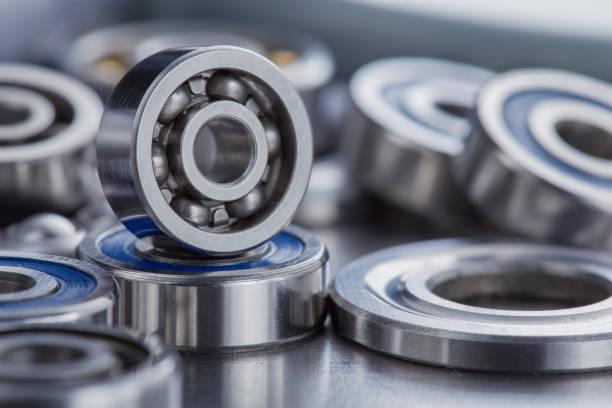
Ball bearings are one of the most common types of bearings used in CNC machines. They consist of small, precision-made balls between two rings or races. This design allows smooth rotation with minimal friction, making them ideal for high-speed applications.
Applications:
● Spindles: Ball bearings are frequently used in CNC machine spindles. They provide the necessary support and precision for high-speed rotation, ensuring accurate cutting and milling operations.
● Motors: CNC machine motors often incorporate ball bearings to reduce friction and improve efficiency. This helps maintain consistent power output and extends motor life.
● Linear Motion Systems: Ball bearings are used in linear guides, allowing smooth and precise movement of machine components along their axes. This is crucial for maintaining accuracy in CNC operations.
● Tool Changers: Automatic tool changers in CNC machines often use ball bearings to ensure smooth and reliable tool switching.
Advantages:
● Low friction, enabling high rotational speeds
● Can handle both radial and axial loads
● Compact design suitable for various applications
● Relatively low maintenance requirements
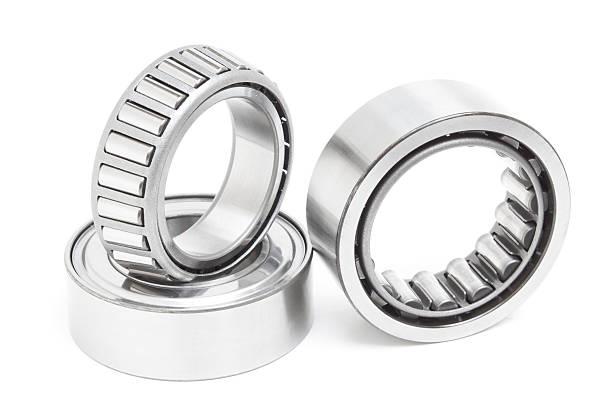
Roller bearings are another essential type of bearing used in CNC machines. They consist of cylindrical rollers held between two races. This design provides a larger contact area than ball bearings, allowing them to handle heavier loads.
Applications:
● Machine Beds: Roller bearings are often used in the support systems of CNC machine beds. They help distribute the weight of the workpiece and cutting forces evenly.
● Gearboxes: In CNC machine gearboxes, roller bearings support shafts and gears, ensuring smooth power transmission and handling of heavy loads.
● Rotary Tables: Large CNC rotary tables often use roller bearings to support the rotating platform, providing stability and precision during machining operations.
● Feed Drives: Feed drive systems use roller bearings to support the movement of heavy components like the machine table or gantry.
Advantages:
● High load capacity, especially for radial loads
● Good shock resistance
● Suitable for moderate to high-speed applications
● Longer service life under heavy loads
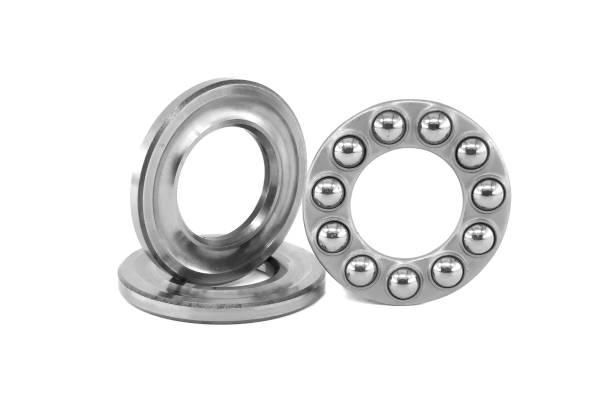
Thrust bearings are specialized bearings designed to handle axial loads in CNC machines. They consist of two rings with rolling elements (either balls or rollers) between them, arranged perpendicular to the shaft axis.
Applications:
● Vertical Machining Centers: Thrust bearings support the spindle in vertical CNC machines, countering the gravitational force on the cutting tool and workpiece.
● Drilling Operations: In CNC drilling processes, thrust bearings help manage the downward force exerted during drilling, ensuring stable and accurate hole creation.
● Milling Machines: Thrust bearings handle the axial loads generated during face milling operations.
● Lathe Tailstocks: In CNC lathes, thrust bearings in the tailstock help support long workpieces and manage the forces during operations like drilling or reaming.
Advantages:
● Excellent for handling axial (thrust) loads
● Can support high speeds in specific designs
● Provides stability to rotating shafts
● It helps maintain precise positioning
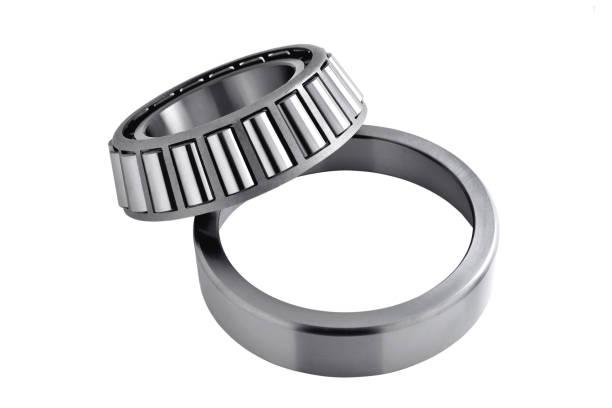
Tapered roller bearings feature conical rollers arranged between tapered inner and outer rings. Their unique design allows them to handle radial and axial loads simultaneously, making them versatile components in CNC machines.
Applications:
● Spindle Supports: Tapered roller bearings are often used to support main spindles in CNC machines, especially where radial and axial loads are significant.
● Rotary Tables: In large CNC machining centers, tapered roller bearings support rotary tables, handling the combined loads from workpiece weight and cutting forces.
● Gear Boxes: CNC machine gearboxes often incorporate tapered roller bearings to manage the complex forces generated during power transmission.
● Tool Turrets: In CNC lathes, tapered roller bearings are used in tool turrets to provide stable support during tool changes and cutting operations.
Advantages:
● Can support combined radial and axial loads
● High load capacity
● Excellent for maintaining shaft alignment
● Suitable for moderate to high-speed applications
Needle bearings are one of the roller bearing categories that use long and thin cylindrical rollers. It is characterized by high Length/Diameter ratio and has a needle-like shape. Due to their small size they are suitable for use in CNC machines with limited radial space for the ballscrew.
Applications:
● Linear Motion Systems: CNC machines mostly employ needle bearings in the linear guides to give smooth and accurate linear motion within limited space.
● Gear Assemblies: In the CNC machine gear systems, needle bearings are used in support of shafts and controlling of radial loads.
● Tool Holders: Some of the CNC tool holders employ needle bearings in order to allow proper rotation of the tools when in use.
● Cam Followers: In CNC machines having cam operated mechanisms, needle bearings are used in cam followers to counter high radial loads and give smooth motion.
Advantages:
● Have high load carrying capacity in relation to their size.
● Compact radial design
● Perfect for taking radial loads
● Less friction and operations that are easily carried out
Spherical or self-aligning bearings consist of an inner ring with a spherical outer surface that sits inside an outer ring with a matching spherical inner surface. This design allows the bearing to self-align, accommodating shaft misalignment and deflection in CNC machines.
Applications:
● Machine Tool Mounts: Spherical bearings are used in CNC machines' mounting points to compensate for slight misalignments and reduce stress on the frame.
● Articulating Joints: In multi-axis CNC machines, spherical bearings facilitate smooth movement in joints that require angular motion.
● Robotic Arms: CNC machines with robotic arms often use spherical bearings in pivot points to allow for flexible, multi-directional movement.
● Vibration Damping Systems: Some CNC machines incorporate spherical bearings in their vibration damping systems to improve machining precision.
Advantages:
● Can self-align to compensate for misalignment
● Capable of handling combined radial and axial loads
● Good shock and vibration absorption
● Suitable for applications with angular movement
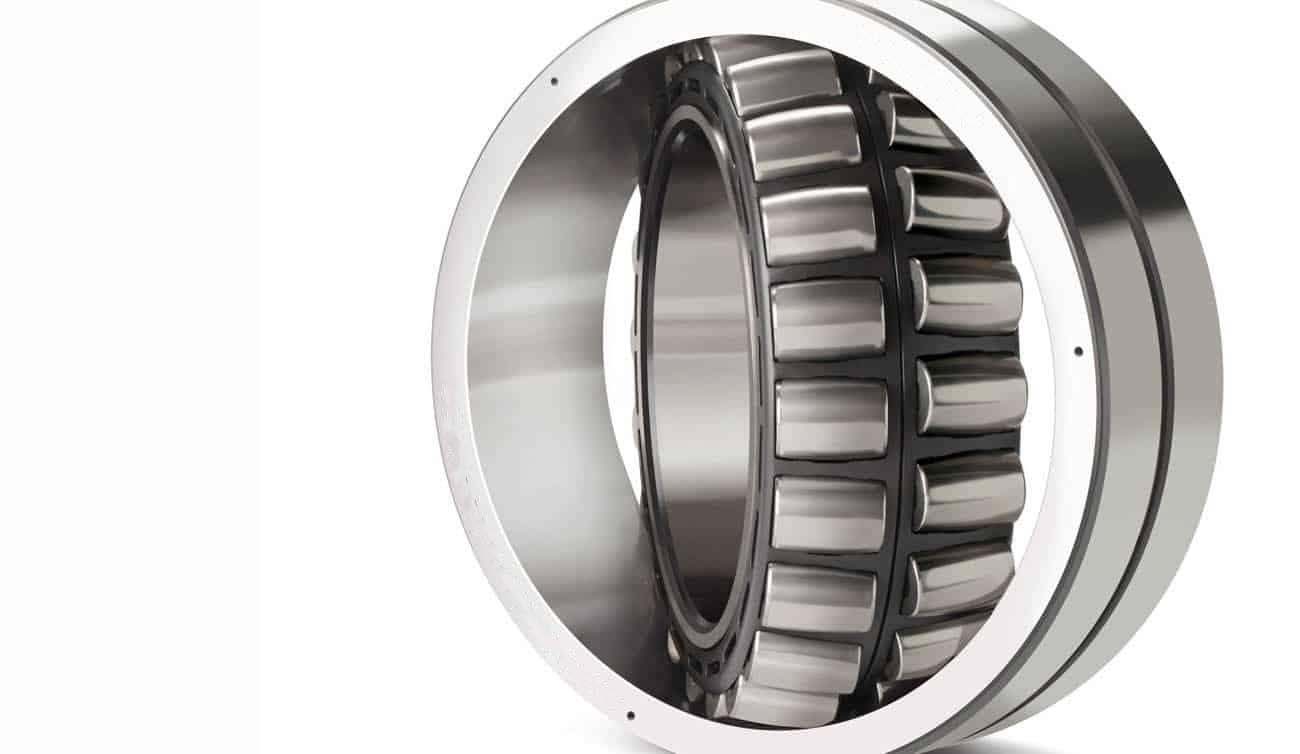
Cylindrical or cylindrical roller bearings consist of cylindrical rollers between inner and outer rings. They are designed to handle heavy radial loads and can operate at high speeds, making them valuable components in CNC machines.
Applications:
● Main Spindles: Cylindrical bearings are often used in the main spindles of CNC machines, particularly in high-speed machining centers, to provide stable and precise rotation under heavy radial loads.
● Large Rotary Tables: In large CNC machining centers, cylindrical bearings support rotary tables, handling heavy workpieces while maintaining accuracy.
● Feed Drives: CNC machine feed drives may use cylindrical bearings to manage the radial loads created during rapid movements and direction changes.
● Gearboxes: Cylindrical bearings in CNC machine gearboxes help manage the forces generated during power transmission, ensuring smooth and efficient operation.
Advantages:
● High radial load capacity
● Excellent for high-speed applications
● Good rigidity and precision
● Can accommodate some axial movement
Bearings play a crucial role in enhancing the performance of CNC machines in several ways:
One of the primary functions of bearings in CNC machines is to reduce friction between moving parts.
By using rolling elements (balls or rollers) between two surfaces, bearings significantly decrease the friction that would otherwise occur in sliding contact. This reduction in friction has several benefits:
● It minimizes wear on machine components, extending their lifespan.
● It reduces heat generation, crucial for maintaining precision in CNC operations.
● Lower friction allows for smoother operation and higher speeds, improving overall machining efficiency.
Bearings are essential for supporting rotational movements in CNC machinery. They provide a stable platform for rotating components such as spindles, allowing them to turn smoothly and accurately.
This support is critical for:
● Maintaining consistent cutting speeds and feed rates.
● Ensuring the precision of circular cuts and contours.
● Enabling high-speed operations without compromising accuracy.
CNC machines often deal with significant loads during operation. Bearings help manage these loads effectively by:
● Distributing forces evenly across the bearing surface, preventing localized stress and wear.
● Supporting both radial and axial loads, depending on the bearing type.
● Absorbing shock and vibration is crucial for maintaining machining accuracy and protecting other machine components.
Bearings excel in these areas and contribute significantly to the overall performance, precision, and longevity of CNC machines. They enable these complex machines to operate at high speeds, handle heavy loads, and maintain the tight tolerances required in modern manufacturing processes.
While bearings are crucial for CNC machine performance, they have challenges. Let's take a look at some common issues that can affect bearings in these precision machines:
Bearings in CNC machines face constant stress and motion, leading to gradual wear over time. Common wear issues include surface fatigue, which can cause pitting or flaking of bearing surfaces.
Contamination from metal chips or debris can accelerate wear, potentially leading to premature bearing failure. In high-speed applications, thermal stress can also contribute to wear, affecting the bearing's performance and lifespan.
Proper lubrication is crucial for bearing function. Inadequate lubrication can increase friction, heat generation, and accelerated wear.
Over-lubrication can also be problematic, causing churning, increased operating temperatures, and potential seal damage. Using the wrong or contaminated lubricant can lead to bearing degradation and reduced performance.
Misalignment in CNC machines can significantly impact bearing performance. It can cause uneven load distribution, increasing stress on certain bearing parts.
This can result in premature wear, increased vibration, and reduced accuracy in machining operations. Severe misalignment can cause bearing failure and potentially damage other machine components.
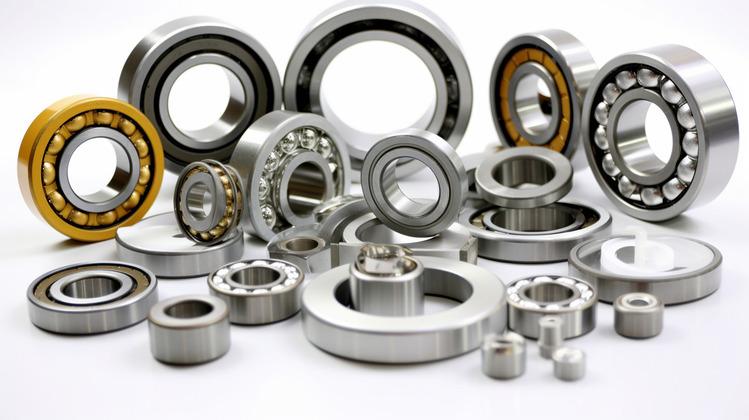
Maintaining bearings in CNC machines is crucial for ensuring optimal performance and longevity. By following these key maintenance tips, you can significantly extend the life of your bearings and improve the overall efficiency of your CNC operations.
Here are some essential practices to keep in mind:
● Regular Inspection: Conduct visual checks for signs of wear, damage, or contamination.
● Proper Lubrication: Use the correct type and amount of lubricant as the manufacturer recommends.
● Cleanliness: Keep the working environment clean to prevent contamination of bearings.
● Alignment Checks: Regularly verify and adjust the alignment to prevent uneven wear.
● Temperature Monitoring: Use thermal imaging or temperature sensors to detect overheating.
● Vibration Analysis: Implement vibration monitoring to detect early signs of bearing failure.
● Timely Replacement: Replace bearings at recommended intervals or the first sign of significant wear.
We've explored the vital role of bearings in CNC machines & covered how bearings reduce friction, support rotation, and manage loads, as well as common issues and maintenance tips.
Looking ahead, bearing technology for CNC machines is evolving with materials and advancements in smart monitoring systems. These innovations promise improved durability and efficiency in CNC operations.
We value your input! Have you worked with bearings in CNC machines? Any questions or experiences to share? Please comment below or contact us. Your feedback helps us provide better content for the CNC community.